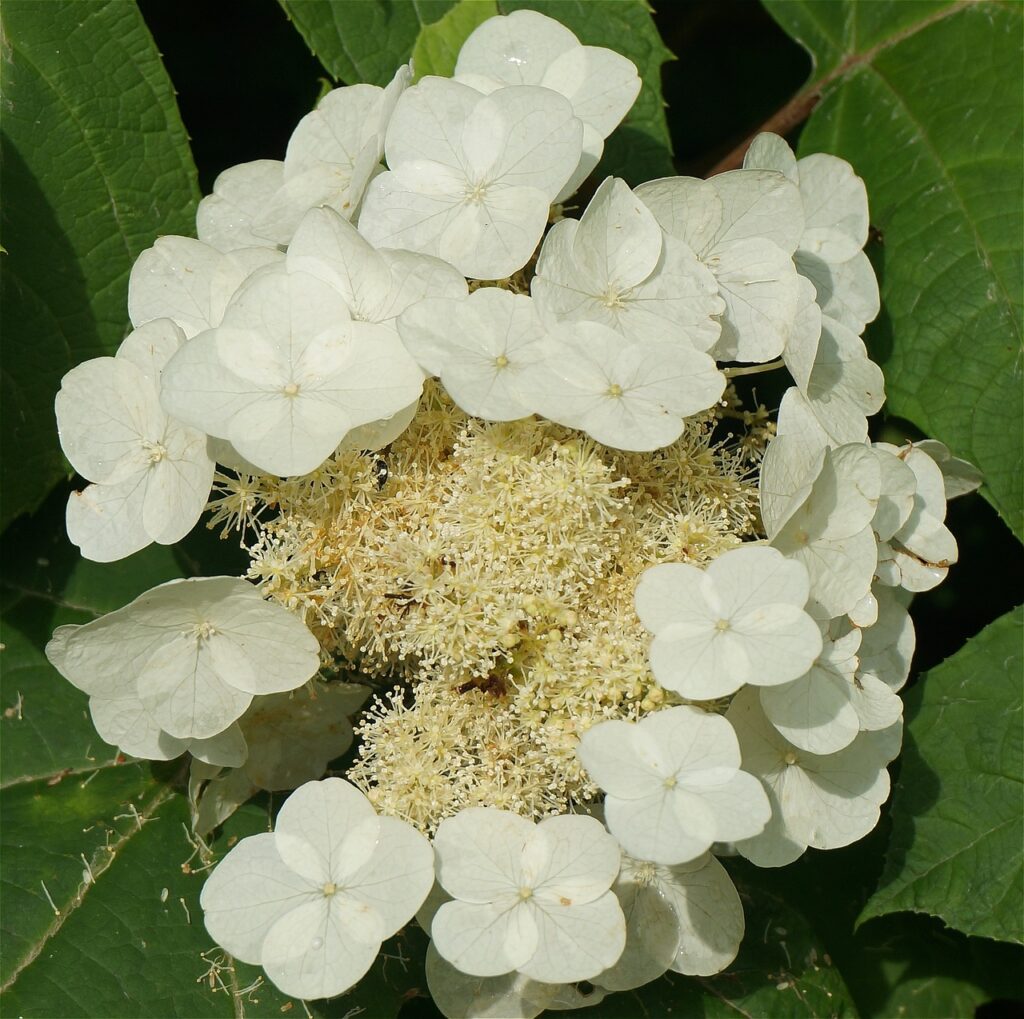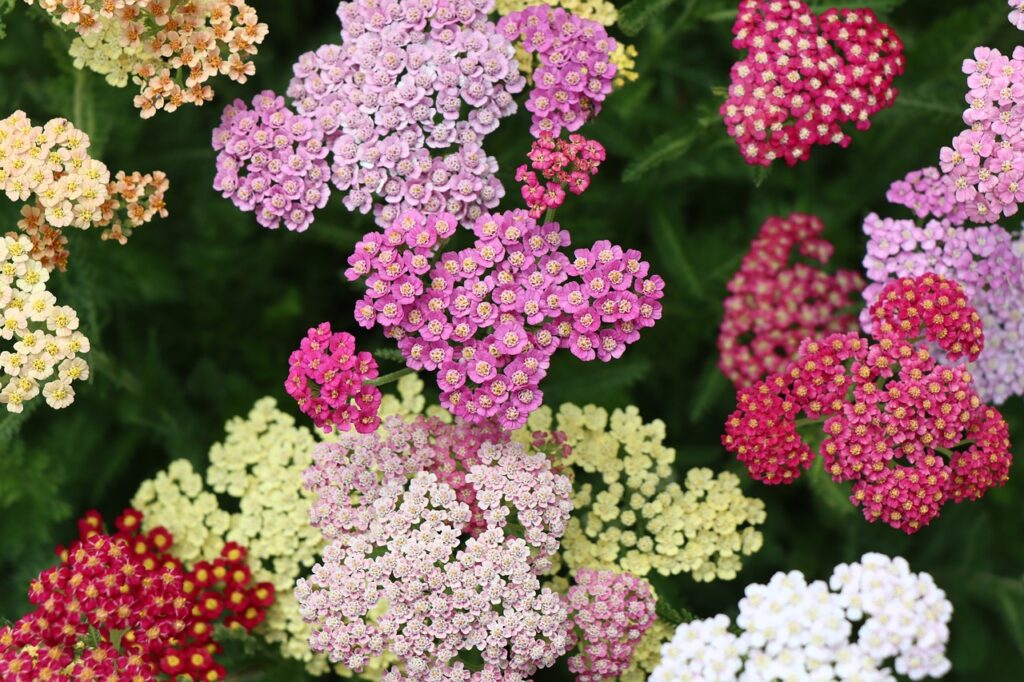The Psychology of Flower Colors – How Color Impacts Your Well-Being
Colors have a profound impact on our emotions, mood, and overall well-being. Different colors can evoke various psychological responses, influencing everything from our energy levels to our sense of calm.
For example, warm flower colors like red and yellow tend to stimulate and energize, while cool colors like blue and purple are associated with calmness and relaxation. The use of color in our surroundings, whether in our homes, workplaces, or natural environments, can significantly affect our mental and physical health. Be sure to check out the free references and research below.



The Significance of the Color Green: Nature is all shades of green from birth to bloom, life depends on green.
Green, in particular, holds a special place in color psychology due to its strong association with nature, growth, and renewal. It is often described as a calming and restful color that can reduce stress and anxiety. Being surrounded by green, whether in a forest, garden, or even through the use of green in interior design, can create a sense of balance and harmony.
The color green is also linked to creativity and problem-solving, making it a valuable color in spaces where focus and innovation are needed. Its prevalence in nature also makes it a symbol of life, vitality, and health.

Psychological Impact: How color makes you feel
Red Flowers: The color red can increase heart rate and create a sense of urgency or excitement. In interior design, red flowers might be used to energize a room or stimulate conversation.
Yellow Flowers: Yellow has been shown to boost mental clarity and increase energy levels. In office or study environments, yellow flowers can enhance concentration and foster a positive work environment.
Blue Flowers: Blue is known to have a calming effect on the mind. It can lower blood pressure and heart rate, making blue flowers ideal for spaces where relaxation and peace are desired, such as bedrooms or relaxation areas.
Purple Flowers: Purple can stimulate creativity and introspection. It is often used in spaces where brainstorming or creative activities occur, as it encourages deep thinking and innovation.
White Flowers: White is associated with purity and simplicity, which can create a clean and uncluttered visual experience. White flowers are often used in minimalistic designs to maintain a sense of clarity and order.

Social and Cultural Influences: How colors are used to set tone for an occasion or a space
Red Flowers: In many cultures, red flowers are associated with celebration and romance. They are popular in occasions like Valentine’s Day and anniversaries due to their associations with love and passion.
Yellow Flowers: Yellow flowers often symbolize friendship and joy. They are commonly given as a gesture of appreciation or to cheer someone up, making them popular in social and casual settings.
Blue Flowers: Blue flowers can be used to convey calm and trustworthiness. They are often chosen for corporate settings or to create a serene environment in homes and public spaces.
Purple Flowers: Purple is traditionally associated with royalty and luxury. Purple flowers can be used to enhance the aesthetic of formal events or to add a touch of sophistication to a space.
White Flowers: White flowers are often linked to purity and new beginnings, making them suitable for weddings, christenings, and other significant life events. They can also be used to convey sympathy and support during times of loss.
Aromas and the Psychology of Smells: How we respond to flowers and plants.
Aromas have a direct connection to the brain’s limbic system, which is responsible for emotions and memory. Certain smells can evoke strong emotional responses and even influence physiological states.
For instance, the scent of lavender is known for its calming effects and is often used to reduce anxiety and promote sleep. Citrus scents, like lemon and orange, are invigorating and can boost mood and energy levels. In natural settings, the smells of pine, fresh earth, or blooming flowers can create a sense of peace and well-being, making aromatherapy a powerful tool in enhancing mental health.

Texture and the Sense of Touch: How plants feel and the response they generate.
The sense of touch plays a critical role in how we perceive and interact with the world around us. Different textures can evoke various emotional responses, with soft, smooth textures generally associated with comfort and safety, while rough or prickly textures can create discomfort or alertness.
In nature, the feel of grass underfoot, the rough bark of a tree, or the smooth surface of a stone can all contribute to our sensory experience and emotional state. Engaging with these textures in a mindful way, such as through forest bathing or gardening, can deepen our connection to the environment and enhance our sense of well-being.
Various Types of Pollution: How we have impacted our World.
Pollution comes in many forms—air, water, soil, noise, and light—and each type can have detrimental effects on human health and the environment. Air pollution, for example, is linked to respiratory and cardiovascular diseases, while noise pollution can lead to stress, sleep disturbances, and hearing loss.
Water and soil pollution can contaminate food and water sources, leading to a host of health problems. Light pollution disrupts natural sleep patterns and can interfere with the behavior of wildlife. Understanding the various types of pollution is essential for mitigating their impact and protecting both human health and the natural world.
Nature’s Effects on Human Beings: Spending time outdoors is proven to improve mental health and physical fitness.
Nature has a profound impact on human beings, influencing our mental, emotional, and physical health. Exposure to natural environments has been shown to reduce stress, lower blood pressure, and improve mood. The sounds of nature, such as birdsong or rustling leaves, can induce relaxation and enhance cognitive function.
Being in nature also encourages physical activity, whether through walking, gardening, or other outdoor pursuits, which is beneficial for overall health. Moreover, nature fosters a sense of connection and belonging, providing a respite from the pressures of modern life and promoting mental well-being.

The Impact of the Environment on the Individual: Plants help restore balance in modern times.
The environment we live in shapes our behaviors, attitudes, and overall well-being. Natural environments tend to promote health and happiness, offering spaces for relaxation, reflection, and rejuvenation. In contrast, urban environments with high levels of pollution, noise, and stress can contribute to mental health issues and physical ailments.
The design of our surroundings—whether naturally sustainable or built with toxic materials—affects how we feel, think, and behave. A well-designed environment that incorporates the essential elements of nature, such as parks, wildlife, tree-lined, green spaces, and natural light, can significantly enhance the quality of life and foster a sense of well-being.
In conclusion, the colors we see, the aromas we inhale, the textures we touch, and the environments we inhabit all play crucial roles in our psychological and physical health. By understanding and harnessing the power of these elements, we can create spaces and experiences that promote well-being and enrich our daily lives.
Further research and references:
“Color Psychology and Color Therapy: A Factual Study of the Influence of Color on Human Life” by Faber Birren
A comprehensive book on how colors affect human behavior, emotions, and overall well-being.
“The Secret Lives of Color” by Kassia St. Clair
This book explores the history and cultural significance of various colors, shedding light on how they have influenced art, fashion, and emotions.
“Color and Human Response: Aspects of Light and Color Bearing on the Reactions of Living Things and the Welfare of Human Beings” by Faber Birren
Focuses on the biological and psychological responses to color and how they can be applied to improve human environments.
“The Little Book of Color: How to Use the Psychology of Color to Transform Your Life” by Karen Haller
A practical guide to understanding and using color psychology in everyday life to enhance well-being.
Articles and Journals:
“The Effect of Colors on Mood: A Systematic Review”
This systematic review published in Journal of the Academy of Psychology discusses various studies on how colors impact mood and emotional well-being.
“The Psychological Impact of Color” by Kendra Cherry
An article on Verywell Mind that breaks down the emotional effects of different colors and how they are used in therapy and marketing.
“Color and Psychological Functioning: The Effect of Red on Performance in Achievement Contexts” by Andrew J. Elliot et al.
Published in the Journal of Experimental Psychology, this paper examines how the color red can influence cognitive and physical performance.
“The Role of Green Spaces in Urban Areas on Health and Wellbeing”
An article in The Lancet exploring how green environments positively affect mental health and reduce stress.
Websites and Online Resources:
Verywell Mind: Color Psychology
A resourceful section on the Verywell Mind website that explains the psychological effects of different colors and how they influence emotions and behavior.
Verywell Mind – Color Psychology
Institute for Color Research
A leading research organization dedicated to the study of color and its effects on human behavior and perception.
Pantone: Color Psychology
The Pantone website offers insights into how specific colors are used in design and their psychological impact on consumers.
Videos and Talks:
“The Science of Color and Emotion” by Ximena Vengoechea
A TEDx talk that explores how colors affect our emotions and behaviors, with practical examples of how to use this knowledge in everyday life.
“How Colors Affect Your Mood” – A Video by AsapSCIENCE
This popular science channel provides an engaging explanation of the science behind color psychology and its impact on mood and behavior.
Research Papers:
“The Influence of Color on Emotions and Mood: A Meta-Analysis”
A comprehensive meta-analysis that examines the relationship between color exposure and emotional states across different studies.
“Exploring the Role of Color in Emotional Well-being: A Psychological Perspective”
A paper discussing how color environments can be optimized for mental health, particularly in clinical and therapeutic settings.
These resources should provide a solid foundation for understanding the psychology of colors and their far-reaching effects on human well-being, emotions, and behaviors.



